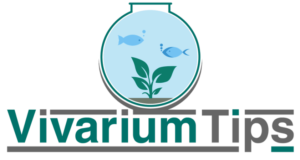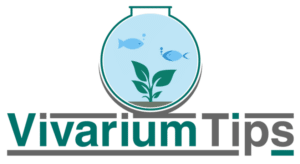One of the most popular types of vivarium that people struggle with creating is a paludarium. There are countless guides out there, and not to mention, great in-depth paludarium tutorials.
Instead of giving you a tutorial, this article will provide paludarium lovers with useful tips that’ll help you in creating a better ecosystem.
It’s great to have many useful paludarium guides out there, but it’s even better to have helpful paludarium tips!
Before we get started, I’d like to share with you a list of useful resources that could even help improve your paludarium building experience. This is compiled with forums, blogs, and communities that could help enhance your paludarium.
From struggling at the beginning stage to feeling unsure of what’s working, here are the creative tips for your paludarium construction.
Paludarium Facts Explained
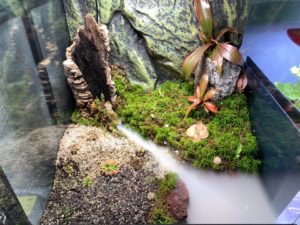
1. Paludariums can sustain both water and land-living creatures: Paludarium is one of the top three popular types of vivarium that most people have. The reason why people love paludarium is that it can sustain both land and water creatures.
Unlike an aquarium where it holds only water creatures and a terrarium where it’s like a desert – this makes paludarium unique in its own way.
2. Before creating your paludarium, figure out your tank size: Different creatures and what you want in your ecosystem will result in the type of tank that you need. There are 10-gallon tanks all the way to 100-gallon tanks available.
3. You can use aquarium tanks, but using a kit made for paludarium is even better: You can use any types of tanks and it doesn’t have to specifically be for paludarium. After all, aquarium/terrarium tanks are made for maintaining an ecosystem.
4. If you’re on a budget, check Craigslist, Facebook Marketplace, etc.: I was searching for paludarium tanks before and the price for a kit can be quite expensive. If you’re on a budget, I would recommend checking out Craigslist and Facebook because they have a lot of affordable deals.

5. Buying a paludarium kit can help ease the process: If you’re considering purchasing your very own paludarium kit, then ordering one online or purchasing at a local pet store can help ease the process. When you’re building your paludarium, it should be much easier with the kit.
6. Paludarium is like a miniature rainforest: A great comparison to a paludarium is a rainforest. Your paludarium can have both land, waterfalls, ponds, and many more. If you know this, then you might have a better perspective and idea on your paludarium build.
7. Create a list of what you want in your paludarium: You should always create a list of what you’re planning to include in your paludarium because sometimes, not everything can go together. For example, some animals you want could kill other animals and plants that you’re planning to grow.

8. Don’t make your paludarium too small: You shouldn’t use starter aquarium tanks to start a paludarium. This applies greatly to people who want to add living creatures into their tanks. You don’t want a fishbowl as your paludarium, you want it bigger than that.
9. Don’t forget to add a heater/filter: This is important because it’s how you can keep your ecosystem alive. There are stories of people creating their tank without using these two and it eventually led to more problems (living things dying, bacteria, etc.). You can find a paludarium filter here and head to this section for heaters.
10. There are five ways to heat a paludarium: According to Josh’s Frogs, you can heat a paludarium with heating pads, heater cable, aquarium water heaters, heat lamps, or heating room. I’ve even written an article explaining the five ways to heat your tank. You can find all the heating materials here.
11. Always ask questions when you’re unsure, don’t proceed: You should absolutely ask questions when you’re stuck or unsure of something during your paludarium build. This is important because one mistake can lead to many others. This is the reason why I created a list of resources to help you out.

12. Start with a trustworthy paludarium DIY guide: You want a guide that many people trust online. While not every guide is perfect, you could always follow number 11 and ask questions from the communities. Here are my two favorite guides from Batam Earth and FishKeepingWorld.
13. Know the difference: You should always know the difference when it comes to vivariums vs. paludariums vs. terrariums. This will provide you with a better understanding of your paludarium construction.
14. Learn how to separate water: Paludarium is known as a water and land ecosystem, so you should understand how to separate the water. You can first focus on what earthy ingredients that can create a land-like area. This can be driftwood, sand, soil, or even rocks.
15. Create a basking spot if you have land creatures: These are the lamps that paludarium owners use to create a heat spot for their pets. That’s what a basking spot is. Even if your tank is heated, land creatures love to stay relax in a basking spot. This is highly recommended if you’re planning on owning land creatures.
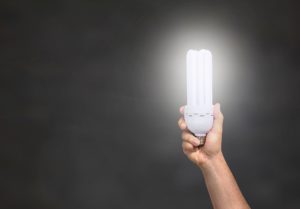
16. Add a canopy: You should add wood such as branches or rocks, so your pets can shelter themselves. Batam Earth created a fantastic list if you’re unsure of what to add. These are also known as ‘hardscape.’ You never know, but certain creatures prefer staying in their shelter for security and shade.
17. You can add wood that sinks, but there are floating woods: This piece of information might come in handy for future paludarium builders knowing the fact that you can add floating wood. By doing this, you can create more room for underwater creatures. Here’s a forum discussion about their safeness.
18. There are different types of paludarium: According to a well-written guide by Batam Earth, there are three builds of a paludarium (divider, iceberg, and floater). They’re each designed differently depending on what you want for your paludarium.
19. The three best animals for your paludarium: The three recommended animal types for your paludarium are fish, crustaceans, and amphibians.
20. Understanding aquatic animals: These animals only stays underwater. You should understand that most paludarium owners raise freshwater fish. It would be difficult maintaining a saltwater paludarium and not to mention, more expensive. Another two aquatic creatures worth mentioning are fiddler crabs, shrimp, or even crayfish.
21. Where semi-aquatic animals can stay: These creatures can stay both underwater and land. For example – some amphibians like frogs, crabs, crawfish, turtles, etc.
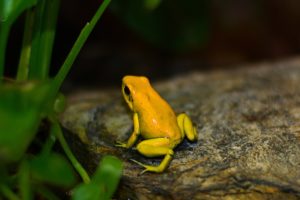
22. Terrestrial, submersed, and emersed plants: There are names for certain plants that can be kept in a paludarium. These three are terrestrial plants, submersed plants, and emersed plants.
23. Terrestrial plants grow on land: These types of plants grow only on land. Many paludarium owners use carnivorous plants, types of moss, and miniature ferns.
24. Watering terrestrial plants with a bottle spray: To prevent overflooding or reaching above water level limits, you can water your terrestrial plants with a bottle spray. This is recommended to prevent overflooding.
25. Growing plants fully underwater: Submersed plants are plants that are completely underwater. They are generally known for being rooted at the bottom.
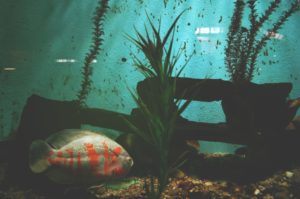
26. Plants rooted underwater with petals and leaves above water: This is known as emersed plants. These are usually plants that are rooted in the dirt below water and can grow with leaves and stem coming out of the water. An example would be Amazon Sword and java fern.
27. There are types of paludarium kit if you’re planning to buy: When you’re shopping for a paludarium kit, keep in mind that there are certain types of kits. The three that I would like to mention are nano, tall, and wide paludarium tanks. Knowing this will give you a better idea of what you want before making any financial decisions.
28. Learn about nano paludarium before purchasing: Nano paludariums are known best for beginners. They’re recommended by many well-known forums and websites. If you’re interested and new to paludarium, then this would be your best option for raising reptiles and amphibians.
29. Learn about the tall paludarium tank: With a tall paludarium tank, you can focus mainly on plants that can stay above water. If you believe that your plants will grow taller, then having a tall paludarium is your best bet.
30. Learn about wide paludarium tanks: For big lovers of paludariums and you’re planning on going far, then a wide paludarium tank is an ultimate suggestion. You can raise water and land species as well as large and small. Your creativity can go above and beyond with this type of paludarium tank.
31. You can create a self-sustaining paludarium: This is more of an interesting fact, but there are people out there with self-sustaining paludariums! This is also known as a bioactive paludarium.
32. Don’t forget about your paludarium background: If you want your paludarium to appear nice, then you should consider looking at paludarium backgrounds. For some people, it’s unnecessary – but for others, having a forest-like ecosystem can be therapeutic for them. You can check out the types of backgrounds here.
33. You can add a paludarium waterfall: This is another fantastic idea for many paludarium lovers. If you love the sound of rain, then you’re absolutely going to love the sound of waterfall coming from your paludarium. This is an idea that could help enhance your paludarium.
34. Riparium is a branch off of paludarium: While paludarium is a branch off of vivarium, you probably don’t know that riparium is a branch off of paludarium.
35. It’s a learning process, so enjoy it along the way: Building a paludarium after all, is a learning process for many people. Don’t stress out too much and enjoy the process along the way. You’re likely to make mistakes, and it’s okay. Just join forums and groups to ask questions and don’t overwhelm yourself too much.
From VivariumTips,
First of all, I wish you the best of luck on your journey to creating your paludarium. If you haven’t started yet or have no idea how to start, here are a few guides worth mentioning:
- The Definitive Guide to Creating a Paludarium
- Guide for Creating a Bioactive Paludarium
- Building Paludarium Guide From Batam Earth
After finding your guide, don’t hesitate to come back and read the useful tips in this article to help enhance and ease your paludarium build.
If you believe that a paludarium is not the type of vivarium you want to run due to a certain situation, then you might want to check out:
- Terrarium vs. Vivarium vs. Paludarium
- Exploring The 12 Types of Vivarium
- The Cost of Running Each Type of Vivarium
- For resources, you can check out the resource page here.
If you enjoyed this article, feel free to support me by sharing any articles on VivariumTips with a friend. 🙂
